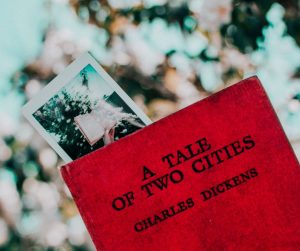Most writers would agree that the process of creating a story for others to read is a rewarding yet challenging experience. If you’re a writer, you no doubt can also relate to being overly critical of your own work. That’s why it helps to seek feedback from others, be it avid readers amongst your family and friends or professional editors who can provide strong support from start to finish as you develop a new manuscript.
For most issues, however, you, as the author, have the final word and must make an ultimate decision on how your story will unfold. One of the most important parts of a story is its ending. When you end a story well, your readers automatically want to read more of your writing. To the contrary, bombing an ending can deter a first-time reader from ever picking up another one of your books.
Choose your ending carefully
When deciding how to end a story, you have multiple options. The key is to find the type of ending that best fits the overall tone and style of the pages that have led up to that point. The following list includes seven ending styles and basic descriptions and examples of each:
- Juxtaposed ending: This is when you end your story in a starkly contrasted and opposite way than it began. Example: Main character finds a treasure at the beginning and gives it all away at the end.
- Unresolved ending: You might want to leave a few loose ends, especially if you plan on writing a sequel or series. Example: (Spoiler alert!) In Tolkien’s “The Two Towers,” Sam realizes Frodo is alive but is immediately separated from him when the guards enter Mordor and slam the gate in his face.
- Epilogue: This type of ending “fast forwards” time to let readers what’s happening some time later, “after” the story. Example: The 10-year-old boy who lived on the farm is now grown with a family of his own.
- Unexpected ending: You can catch readers off-guard by having the antagonist in your story become the hero or vice versa, or by ending with another element of surprise. Example: A character who has been acting suspiciously in a murder mystery was doing so “under cover,” and winds up catching the real killer.
- Ambiguous ending: This is when you end the story in such a way that there are numerous possibilities, so it’s left up to the reader’s imagination to decide what happened. Example: A romantic novel that ends without a clear conclusion regarding the main characters’ relationship. Do they part ways? Do they get married? If they’ve been separated, will they find each other?
- Full circle ending: This type of ending leads readers back to the beginning. Example: Your story began with someone sitting under a tree, thinking back to childhood and ends with the same scene, after the story has taken the reader back in time to fill in all the gaps.
- Resolved ending: This ending leaves no stone left unturned or issue unresolved. Example: In a murder mystery, the reader winds up knowing who did what, where, when, how and why. (Whether or not justice is served is another choice the author would have to make.)
It’s often helpful to write a story with various endings. You can then ask for feedback from family and friends, or from a developmental editor. Writers must be true to themselves. However, when the goal is to sell books, it would be foolish not to measure potential preferences of readers by “testing” numerous endings out before submitting your story to a publisher.









